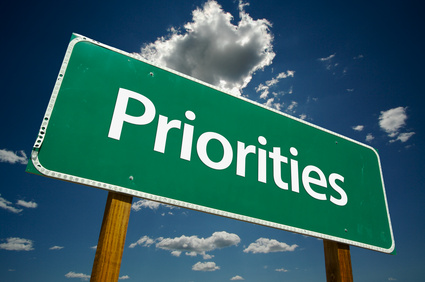
How to get better with priorities
Every week I work with the most amazing group of outside-the-box learners. All are right-brained students who struggle with some combination of executive function issues. In a nutshell, they learn differently. We work on homework, organization, time management, emotional regulation, social issues, etc..
Last week, one of my high schoolers asked, “how should I prioritize my homework so I can get it done more efficiently?” This is a great question, and here’s my stock answer, “The best way to prioritize is to understand your natural prioritization style and go with it. If your style has certain limitations, be aware of them, and make adjustments to compensate for them.”
Sounds obvious, right? But what the heck is a prioritization style and how can we apply this?
Prioritization Styles
Here’s how I break it down. There are 5 major prioritization styles that people use:
1. Easiest first – Some people prioritize doing the easiest tasks first. They like the feeling of accomplishment and the sense of getting it done quickly. It also helps get the momentum going. The problem comes when these students continue to procrastinate on the more challenging tasks. They need to have realistic dialogue regarding strategies for doing these.
2. Hardest first – People who do the hardest first like to “get it out of the way.” They are often naturally good at prioritizing. My students rarely choose this method as they often want to avoid harder assignments.
3. Quickest first – People who do the quickest first like to cross as many things off the list as possible so it feels like they are getting more done. Much like the people who like getting the easiest done first, they can struggle with procrastinating.
4. Longest first – People who do the longest first feel like they are getting their time back. They feel a big sense of accomplishment and it makes the next tasks feel more manageable.
5. Most important first – Most left brained people are very good at doing the most important task first. They are great at prioritizing. My students will often do this when I help them plan their study sessions with a lot of intention.
Metacognition
When I work with students, I want them to take ownership and to be involved in articulating their preferences. I want them to build the metacognitive muscles that will help build intentionality around their approaches to learning, studying and homework.
Here’s how I phrase it to students, “So how do you like to do your homework, easiest first, hardest, quickest, longest or most important?”
Planning
While I have countless strategies for dealing with prioritization, I’m going to share the most valuable one. It consists of asking three guiding questions:
1. What’s the most important thing for you to get done today?
2. What do you need in order to get it done?
3. What’s your plan?
I then help them get crystal clear on the plan and help them get started. Once the train is going, it’s a lot easier to keep moving.
Best of luck!
ps- if you liked this post, please share it or comment below. Thanks for the support, Seth